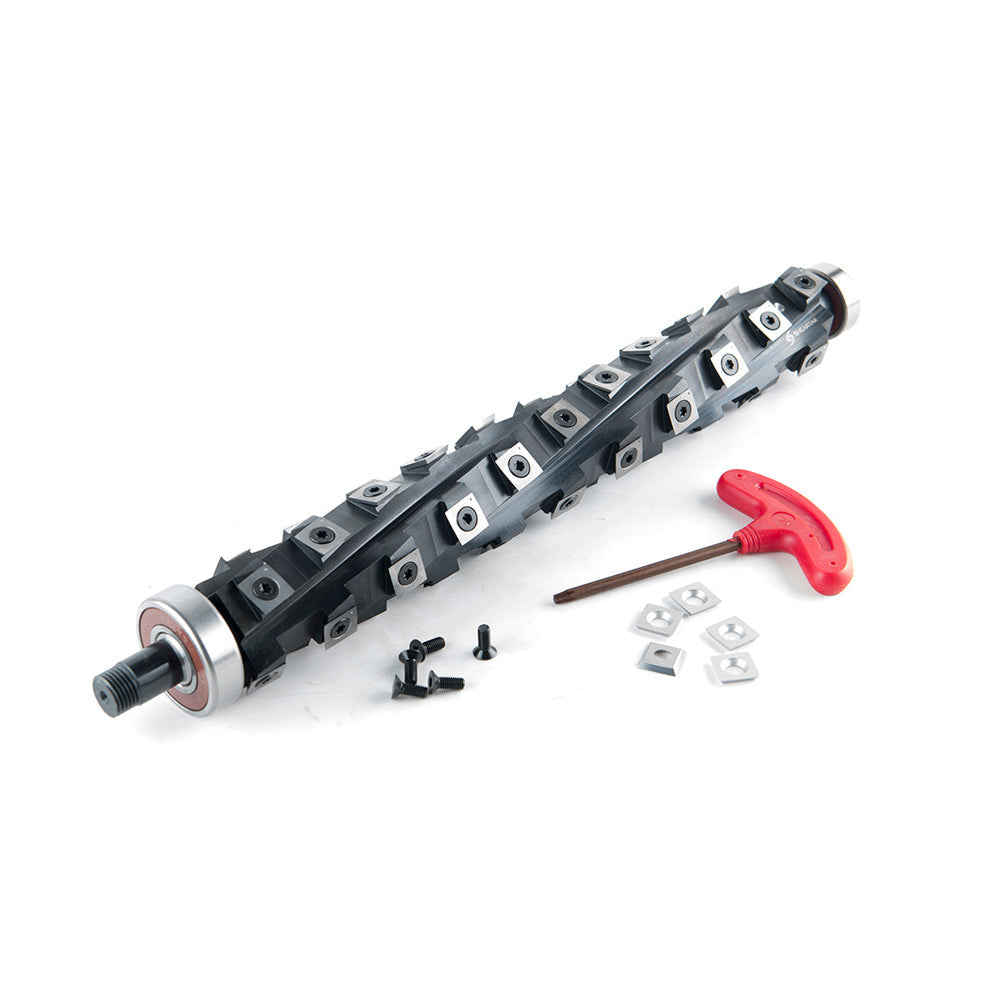
Cutterheads for DW735, OEM or Non-OEM. Which one's better?
When it comes to Sheartak, our best seller has always been our cutterhead line for the DW735. We offer an OEM and non-OEM variant, so let's dive into their differences.
The OEM variant comes with its 40 carbide inserts uninstalled. This means that you will have to install the cutterhead before putting its inserts on. It has a cutting depth of 1/8" per pass and it's the model most people get, as this increased depth along with a straight-forward carbide insert installation give hobbyists great results and flexibility.
The non-OEM variant has a slightly smaller cutting circle, making its cutting depth 1/16" per pass. However the carbide inserts come already installed, so the installation process is quicker. We recommend this model for hobbyists who don't mind more passes and would rather skip on the carbide insert installation.
In the next section, I'll answer some frequently asked questions/concerns about the models.
FAQ:
1) Can I cut more than 1\16" per pass with the non-OEM variant? Theoretically, you could do that, but if the cut is heavy, increased pressure on the rollers could cause the table to flex, potentially damaging your equipment.
Check the illustration below for an explanation:
"Example"
Attempting to cut more than 1/16" will put a higher load on the infeed roller and the table, which could have several consequences, such as damage to your rollers or table, and snipe
2) Will these cutterheads cause snipe?
Snipe is an issue in every planer, it's not dependent on the cutterhead itself. It's usually caused by the pressure on the feeding roller being too high, which lifts the board and removes extra material. With these smaller diameter models, it's fair to assume that users might try to exceed the recommended 1/16" cut per pass - which as previously explained - will overexert the in-feed roller and cause snipe. As long as you cut less than 1/16" per pass there should be no issues.
3) Will these cutterheads break my machine's belt?
Belts can sometimes burn up due to heat buildup. This is usually caused by an incompatibility between the belt and pulleys or a misalignment. There is no misalignment with our model as it is machined at a very high precision. After-market belts could run into some tension/length issues, but if you keep the original belt, it should be fine.
During the installation process, if you ensure the belt is fully on both pulleys as outlined in our installation manual, there should be no issues with the belt.
Feel free to reach out if you have any questions and thank you for checking out this blog!
The OEM variant comes with its 40 carbide inserts uninstalled. This means that you will have to install the cutterhead before putting its inserts on. It has a cutting depth of 1/8" per pass and it's the model most people get, as this increased depth along with a straight-forward carbide insert installation give hobbyists great results and flexibility.
The non-OEM variant has a slightly smaller cutting circle, making its cutting depth 1/16" per pass. However the carbide inserts come already installed, so the installation process is quicker. We recommend this model for hobbyists who don't mind more passes and would rather skip on the carbide insert installation.
In the next section, I'll answer some frequently asked questions/concerns about the models.
FAQ:
1) Can I cut more than 1\16" per pass with the non-OEM variant? Theoretically, you could do that, but if the cut is heavy, increased pressure on the rollers could cause the table to flex, potentially damaging your equipment.
Check the illustration below for an explanation:
"Example"
Attempting to cut more than 1/16" will put a higher load on the infeed roller and the table, which could have several consequences, such as damage to your rollers or table, and snipe
2) Will these cutterheads cause snipe?
Snipe is an issue in every planer, it's not dependent on the cutterhead itself. It's usually caused by the pressure on the feeding roller being too high, which lifts the board and removes extra material. With these smaller diameter models, it's fair to assume that users might try to exceed the recommended 1/16" cut per pass - which as previously explained - will overexert the in-feed roller and cause snipe. As long as you cut less than 1/16" per pass there should be no issues.
3) Will these cutterheads break my machine's belt?
Belts can sometimes burn up due to heat buildup. This is usually caused by an incompatibility between the belt and pulleys or a misalignment. There is no misalignment with our model as it is machined at a very high precision. After-market belts could run into some tension/length issues, but if you keep the original belt, it should be fine.
During the installation process, if you ensure the belt is fully on both pulleys as outlined in our installation manual, there should be no issues with the belt.
Feel free to reach out if you have any questions and thank you for checking out this blog!

Leave a comment